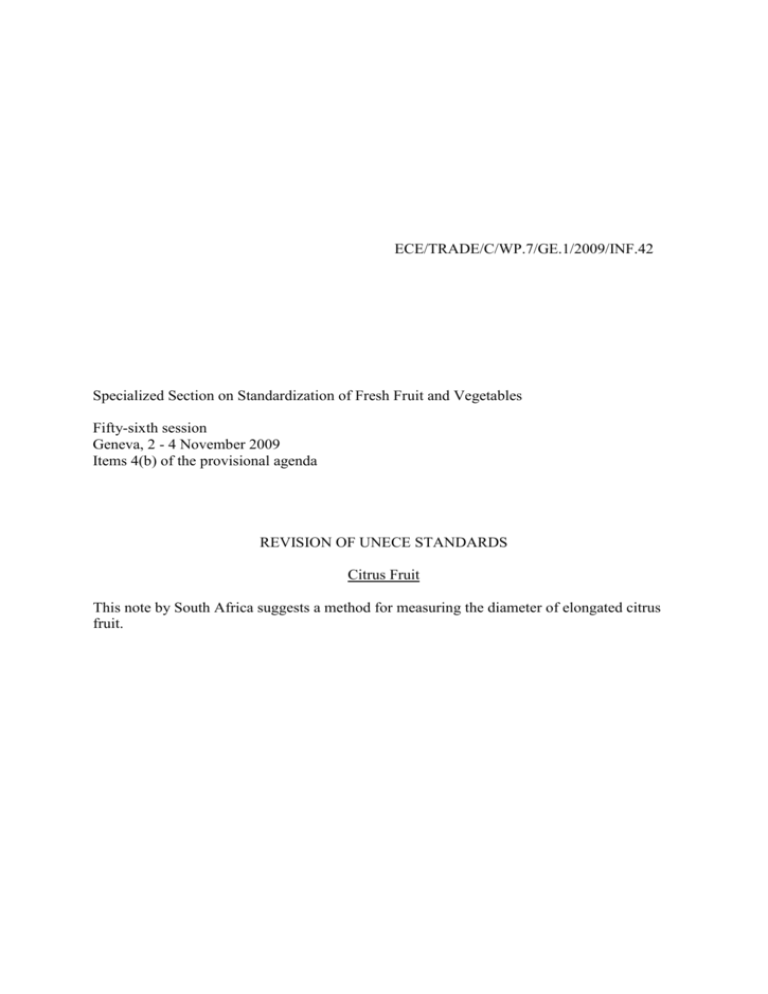INF42
advertisement

ECE/TRADE/C/WP.7/GE.1/2009/INF.42 Specialized Section on Standardization of Fresh Fruit and Vegetables Fifty-sixth session Geneva, 2 - 4 November 2009 Items 4(b) of the provisional agenda REVISION OF UNECE STANDARDS Citrus Fruit This note by South Africa suggests a method for measuring the diameter of elongated citrus fruit. Recommendation from South Africa to establish a standardised method of determining the minimum diameter of citrus fruit Background For a number of years regulators in South Africa faced queries from local exporters sending fruit into the Europe and the UK regarding the measurement of elongated citrus fruit types and varieties. In South Africa, when elongated fruit fails to reach the minimum diameter requirements, the average of the polar and equatorial diameters is taken as the minimum diameter. If this is not done problems are experienced in most cases with the correct filling and net mass of the cartons which leads to queries and penalties from importers. This practice is only applied to lemons, limes, oranges, pummelos and grapefruit. Soft citrus (mandarins) is excluded as it does not have a tendency to be elongated. Importers in Europe and the United Kingdom only measure the equatorial diameter of the fruit and never consider the average of the polar and equatorial diameters. The proposed South African method is better equipped to deal with long fruit especially if it comes to inherently elongated varieties such as Delta Seedless and some of the navel varieties. The difference in interpreting of the diameter standard of fruit however makes it difficult with some European and UK customers. Recommendation Considering the above it is thus recommended by South Africa that in those cases where elongated citrus fruit does not meet the minimum diameter requirements based on the equatorial diameter, the polar diameter of the fruit also be determined and decisions be based on the average of the two measurements.









